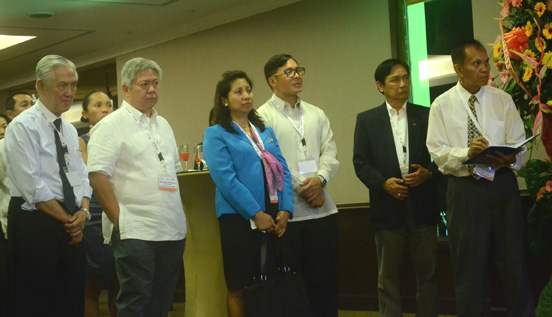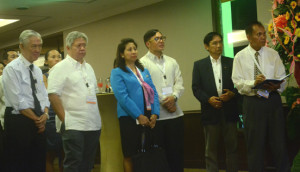

THE Philippine economy is astir, perhaps at a rate even more vibrant than what economists have forecast, according to executives of local budget carrier South East Asian Airlines (SEAIR), who say growth is visible in each of the local destinations its flies to, particularly in the southern Philippines.
“This drove us to launch a cargo service to complement our passenger service,” said Capt. Adelberto Yap, vice president for operations of SEAIR, on the sidelines of the recent launching of the airline’s cargo service.
Yap, a retired major general in the air force, said demand for air cargo transport is strong, a good indicator that the Philippine economy is robust.
He specifically cited Cebu and Davao, the traditional economic powerhouses of the south served by SEAIR, as the two strongest users of air cargo services in the regions. Davao’s demand is driven by the province’s fruit and farm product exports, while demand from Cebu is propelled by its handicraft exports and other products.
SEAIR is also bullish on the economy, saying that the growth potential of the country has prompted the airline to embark on a three-pronged expansion of fleet, network and services.
Since August last year the carrier, 40%-owned by Tiger Airways of Singapore, has been operating two Airbus 319 planes leased from Tiger and three A320 aircraft bought from Airbus.
SEAIR will take delivery of two brand-new A320 planes in July and August this year.
The carrier has started a program to grow its present fleet by two aircraft each year until its financial year 2014, and targets to add two to three planes each year afterwards, said Kwan Yue, chief operating officer of Airtropolis GSA, which handles the marketing of SEAIR and its sister airline Mandala Airlines of Indonesia.
Airtropolis, a Singapore-based general service agency, launched the SEAIR cargo service via a slide presentation at the Manila Diamond Hotel. The event was attended by more than 100 guests mainly comprising air freight forwarders.
Strong economy
Last year, the government reported a 6.6% growth in the Philippine economy. This year, foreign economists are predicting GDP growth of 5.6%.
But Yap forecast that the economy will grow even further as people are more confident to spend now in the malls and on travel than they did in previous years because of their trust in the present government.
“The economy is getting strong. You can feel it. The indicators are all there,” he said.
“That’s why most of the guests here tonight are freight forwarders. They are going to jockey for space on our planes,” said Yap.
SEAIR will use belly space on its passenger planes to carry cargo, said Yap, who estimated that the aircraft’s cargo hold can carry 3.5 tons of freight. With domestic passengers traveling with less luggage than those going abroad, most cargo holds on domestic flights are hardly used, Yap said.
“You’d be surprised to see a 180-seater plane flying from General Santos City to Manila with just a handful of passengers, but its belly is full of frozen tuna to be exported to Japan and Europe,” he said.
“The tuna alone makes up for the slack in passengers.”
The man behind SEAIR’s air cargo push is Mark Anthony Chiang, cargo marketing manager of Airtropolis GSA Phils, which handles the marketing activities of the airline.
At 35, Chiang said he planned the move into cargo operation after studying the market for months. Now that it has got off the ground, he is excited about its prospects. “Definitely it’s profitable,” he said.
“You fly to the north, you load onions on the way back and make money at P17 per kilo,” adding that 750 kilos of onions can be easily carried in the plane’s belly. (Chiang said P17 is the basic rate offered by SEAIR to airfreight forwarders.)
He is also looking at regular corporate customers. Chiang said he has already landed a deal to transport supplies for a pancake chain’s provincial branches and is targeting other food chains and food manufacturers.
Comparing the robustness of the air cargo sector in the Philippines, Chiang cited as example big international airlines that charge P17 per kilo of freight bound for Europe.
“At the same rate of P17 per kilo of domestic cargo, why would I fly to Europe?” he said.
For its international operations, SEAIR flies daily from its hub in Clark to three destinations in the region – Hong Kong, Bangkok and Singapore, Kwan said.
Over the next two weeks, the carrier will add seven destinations, Kwan said. On the domestic front, he said, SEAIR will begin a Cebu-Davao flight on May 20.
The airline is also setting its sights on Seoul, Taipei and Osaka.
[copyscape]




